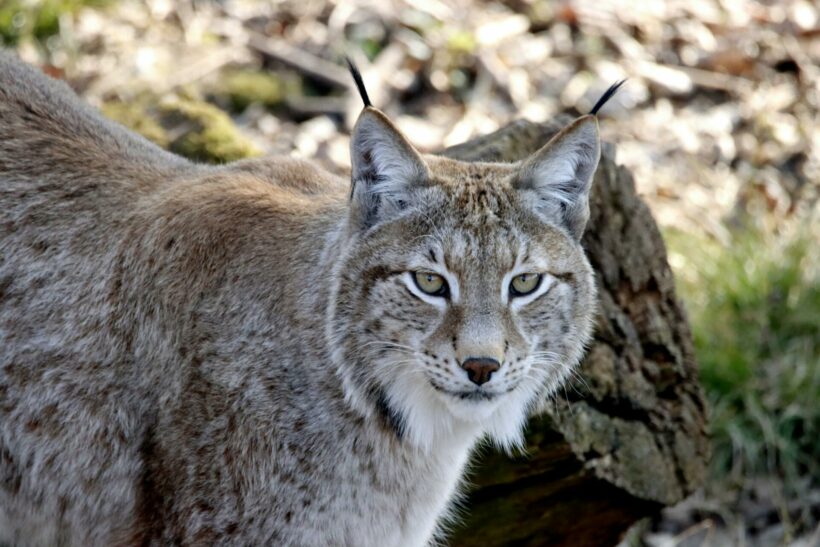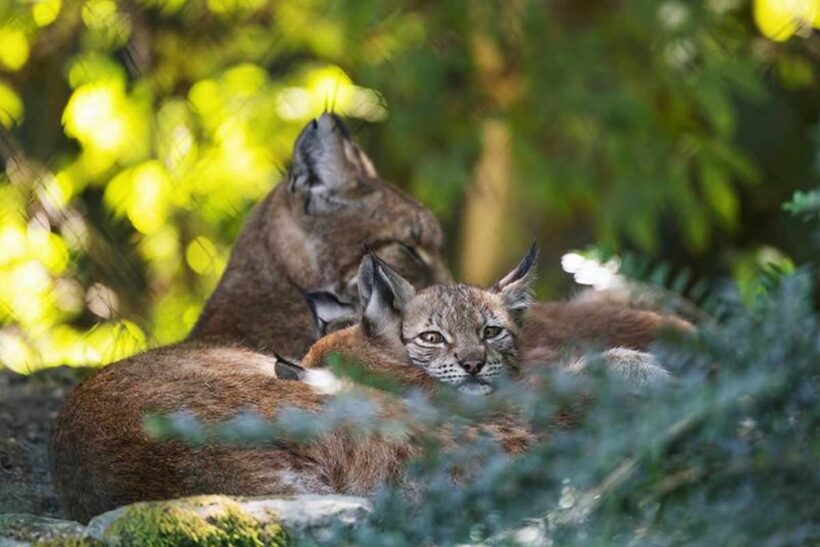by: Assaf Levy, BioDB
Every year on June 11, wildlife enthusiasts and conservationists around the globe come together to celebrate International Lynx Day. This particular day is dedicated to raising awareness about the elusive and majestic lynx, a wild cat species known for its distinctive tufted ears, piercing eyes, and solitary nature. International Lynx Day aims to educate the public about the importance of protecting these remarkable creatures and their natural habitats.
Lynxes belong to the medium-sized cat family, Felidae. They are the biggest wild cats found in Europe, but depending on the species, can be slightly smaller than a bobcat. Unlike most cats, lynxes have a short, stubby tail that looks almost bobbed, giving them a distinctive silhouette. Their most striking feature, however, is the presence of black tufts adorning the tips of their pointed ears. These tufts enhance their hearing, allowing them to pinpoint even the faintest sound of prey.
There are four species of lynx: the Eurasian lynx (Lynx lynx), the Canada lynx (Lynx canadensis), the Iberian lynx (Lynx pardinus), and the bobcat (Lynx rufus). Each species has unique characteristics and habitats, but they share common traits that make them fascinating subjects of study and admiration.
Species and Distribution
1. Eurasian Lynx: The largest lynx species, the Eurasian lynx can be found in the forests of Europe, Russia, and Central Asia. These cats have a broad range, inhabiting diverse environments from the dense boreal forests of Siberia to the mountainous regions of the Alps and the Carpathians.

Pixabay | CC0
2. Canada Lynx: Native to North America, the Canada lynx primarily resides in the boreal forests of Canada and Alaska. These cats are well-adapted to cold climates, with thick fur and large, snowshoe-like paws that help them navigate deep snow.

Pexels | CC0
3. Iberian Lynx: One of the most endangered wild cats in the world, the Iberian lynx is found in the scrub forests and rocky areas of southwestern Spain and Portugal. Intensive conservation efforts have been made to save this species from extinction, leading to a gradual increase in their population.

Wikimedia Commons| http://www.lynxexsitu.es | CC BY 3.0 ES
4. Bobcat: The most adaptable of the lynx species, the bobcat can be found throughout North America, from southern Canada to northern Mexico. Bobcats inhabit various environments, including forests, swamps, deserts, and even suburban areas.

Pexels | CC0
One of the most notable features of lynxes is their large paws, which are covered in thick fur. These paws act like snowshoes, distributing their weight and allowing them to move efficiently across snowy landscapes. This adaptation is particularly evident in the Canada lynx, which relies heavily on its ability to traverse deep snow to hunt its primary prey, the snowshoe hare.
Regardless of the species, all lynxes share some common characteristics. They are solitary creatures, preferring to live and hunt alone except during breeding season. Their keen eyesight and exceptional hearing make them skilled predators, adept at stalking and pouncing on unsuspecting prey. Their primary food source consists of snowshoe hares, but they’ll also hunt rabbits, rodents, small birds, and even fish.
Conservation Status
The conservation status of lynx species varies. The Eurasian lynx is listed as “Least Concern” by the International Union for Conservation of Nature (IUCN), but some local populations are endangered due to habitat loss and hunting. The Canada lynx is also classified as “Least Concern,” although it faces threats from habitat fragmentation and climate change.
Once on the brink of extinction, the Iberian lynx is now listed as “Endangered.” Intensive conservation efforts, including captive breeding and habitat restoration, have helped increase its population from fewer than 100 individuals in the early 2000s to over 400 today. Despite this progress, the Iberian lynx remains one of the most threatened wild cats in the world.
Bobcats are the most abundant and widespread lynx species, classified as “Least Concern.” Their adaptability to various environments has allowed them to thrive, even in areas heavily influenced by human activity.
A Call to Action
As we celebrate International Lynx Day, let us remember that the future of these magnificent creatures lies in our hands. The lynx, with its silent grace and striking presence, symbolizes the wild beauty of our planet. Each of us has a role in ensuring their survival, from supporting conservation initiatives to spreading awareness about their plight. By protecting the lynx, we are safeguarding the delicate web of life that sustains us all. Let us be the voice for these silent hunters, advocating for a world where they can roam free and wild. Together, we can make a difference and leave a legacy of hope and conservation for generations to come.






